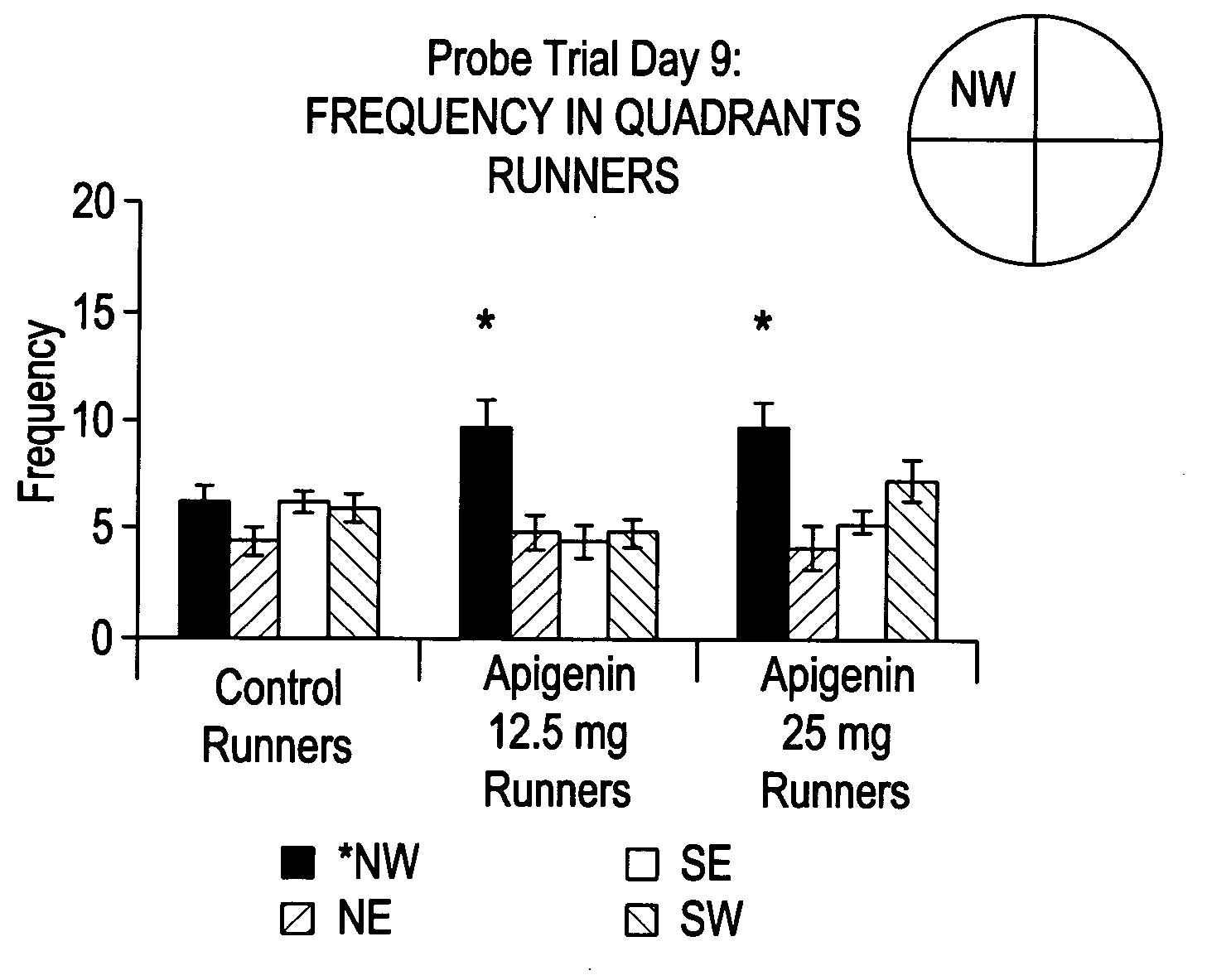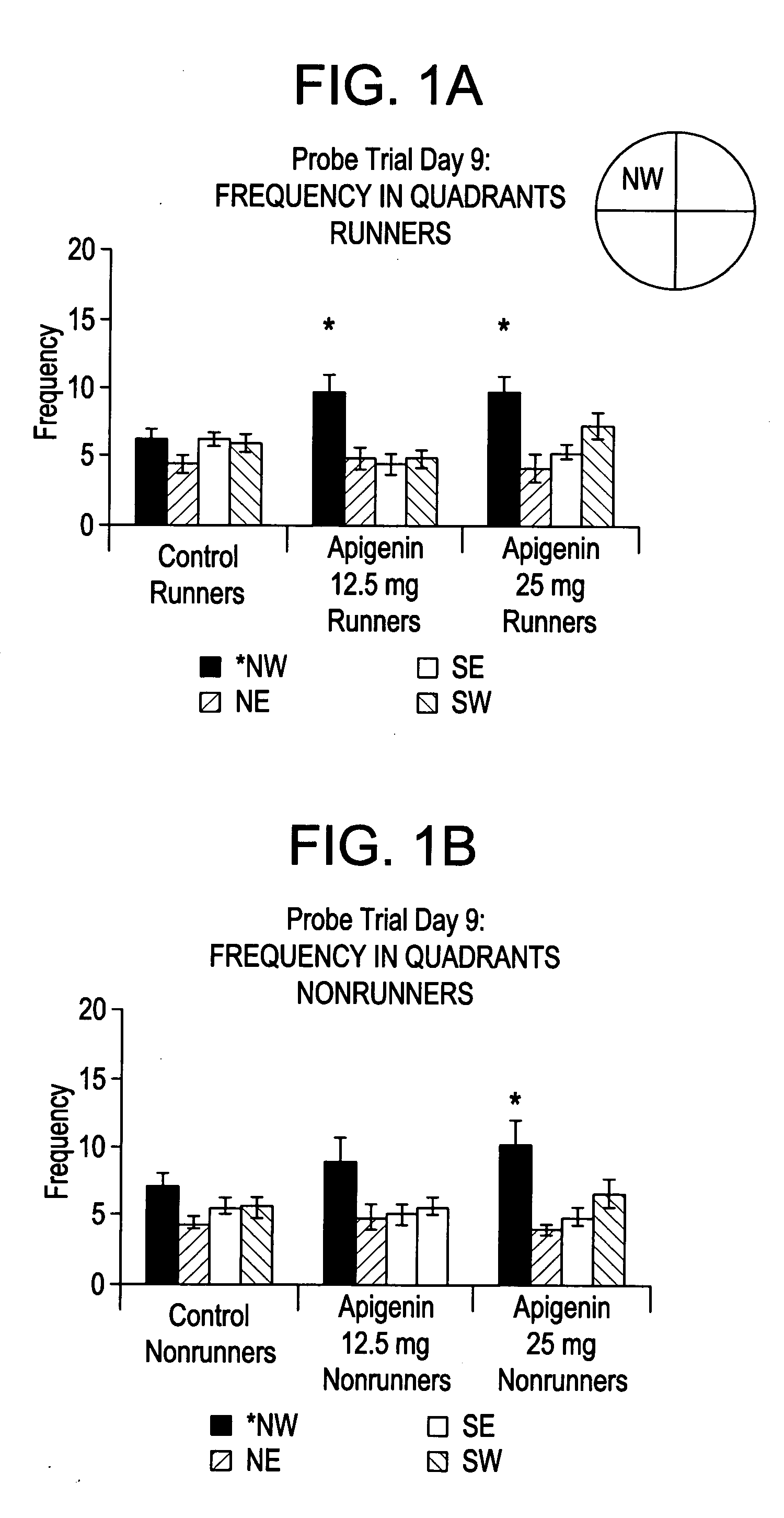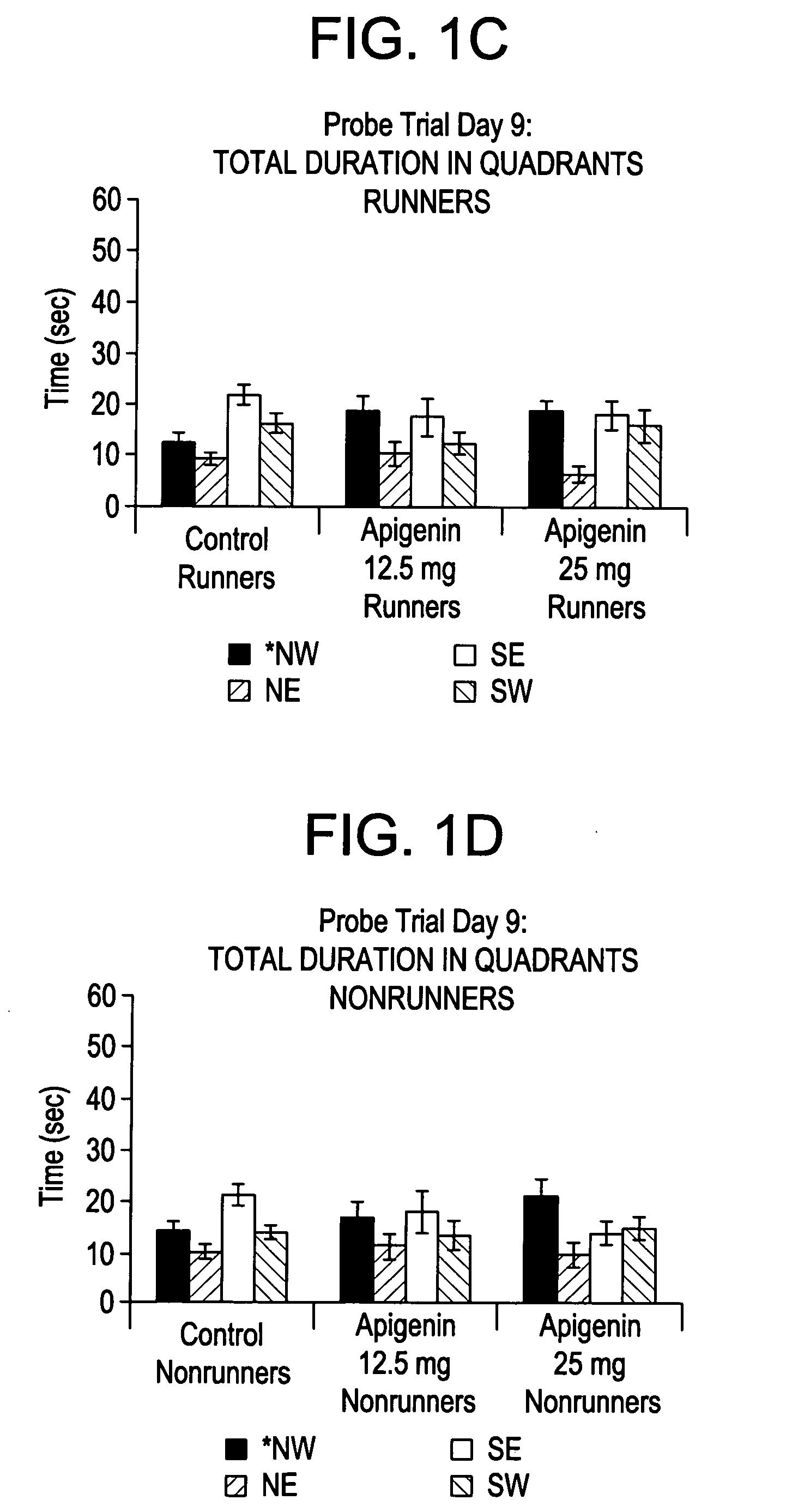Neurogenic compounds
a technology of neuronal compounds and compounds, applied in the field of neuronal compounds, can solve the problems of hippocampus damage, inability to remember places, and difficult to form new memories,
- Summary
- Abstract
- Description
- Claims
- Application Information
AI Technical Summary
Problems solved by technology
Method used
Image
Examples
example 1
Long-Term Injection Study of Apigenin
[0095]A six-week study was conducted in which apigenin was administered by injection to mice at two different doses in conjunction with or without daily voluntary exercise (running). Behavioral testing was administered after 30 days of injections using the Morris water maze and object recognition test.
Materials and Methods
[0096]Apigenin was dissolved in [10:90] Tween 80: 0.9% NaCl. All compounds were purchased from commercial sources. Aliquots of Tween 80: 0.9% NaCl solutions were used for testing in the in vivo model.
[0097]Sixty-four mice (age seven wks) were divided into four test groups (sixteen per group) and received either:
[0098]0.9% NaCl,
[0099]Tween 80 / 0.9% NaCl,
[0100]Apigenin 12.5 mg / kg, or
[0101]Apigenin 25 mg / kg
[0102]Injections were administered intraperitoneally (i.p.) for forty-two days total. In addition to test injections, daily i.p. injections of 5-bromo-2-deoxyuridine (BrdU) [10 mg / ml] were administered for the first eight days at ...
example 2
Object Recognition Study
Materials and Methods
[0108]Each mouse receiving either apigenin 25 mg / kg or Tween 80:0.9% NaCl (control) solutions was administered an i.p. injection of either drug or control for 7 days, after which they were trained and tested on visual paired comparison task (VPC) behavioral assay. The paradigm consisted of habituation to the experimental room for two hours prior to the experiment on Days 1 and 2. After habituation on Day 1, mice were given a five minute exposure to the testing chamber, followed by a thirty second exploration of two identical objects (familiarization training). Twenty-four hours after the familiarization training, mice were once again re-habituated to the room and testing chamber for two hours and one minute, respectively. After re-habituation mice were placed back into the testing chamber and allowed to explore a familiar and novel object for five minutes. Object exploration times were measured for both familiar and novel objects on Days ...
example 3
Histological Analysis of Brain Tissue
[0110]After the long-term study of Example 1 and all behavioral testing was concluded (Day 42), mice were perfused using 4% paraformaldehyde and their brain tissue was extracted. Brain tissue was sectioned and stained for BrdU / DAB quantification of dividing cells. A second immunofluorescence stain was used for phenotyping of the newly dividing cells. Brain sections were also taken and stained with Brdu / NeuN / GFAP. Phenotype analysis was completed to determine the percentage of dividing cells co-labeled with NeuN, a marker used to identify mature neurons. Using the percentage, it was possible to calculate the total number of BrdU / NeuN co-labeled cells in the dentate gyrus.
Results
[0111]Quantification of the BrdU / DAB stained tissue showed a significant increase in dividing cells between the running mice and non-running mice (F(5, 34)=16.855 p≦0.0001) (FIG. 2). A significant increase in the number of dividing cells for the apigenin 25 mg / kg non-runner...
PUM
| Property | Measurement | Unit |
|---|---|---|
| Disorder | aaaaa | aaaaa |
Abstract
Description
Claims
Application Information
 Login to View More
Login to View More - R&D
- Intellectual Property
- Life Sciences
- Materials
- Tech Scout
- Unparalleled Data Quality
- Higher Quality Content
- 60% Fewer Hallucinations
Browse by: Latest US Patents, China's latest patents, Technical Efficacy Thesaurus, Application Domain, Technology Topic, Popular Technical Reports.
© 2025 PatSnap. All rights reserved.Legal|Privacy policy|Modern Slavery Act Transparency Statement|Sitemap|About US| Contact US: help@patsnap.com



